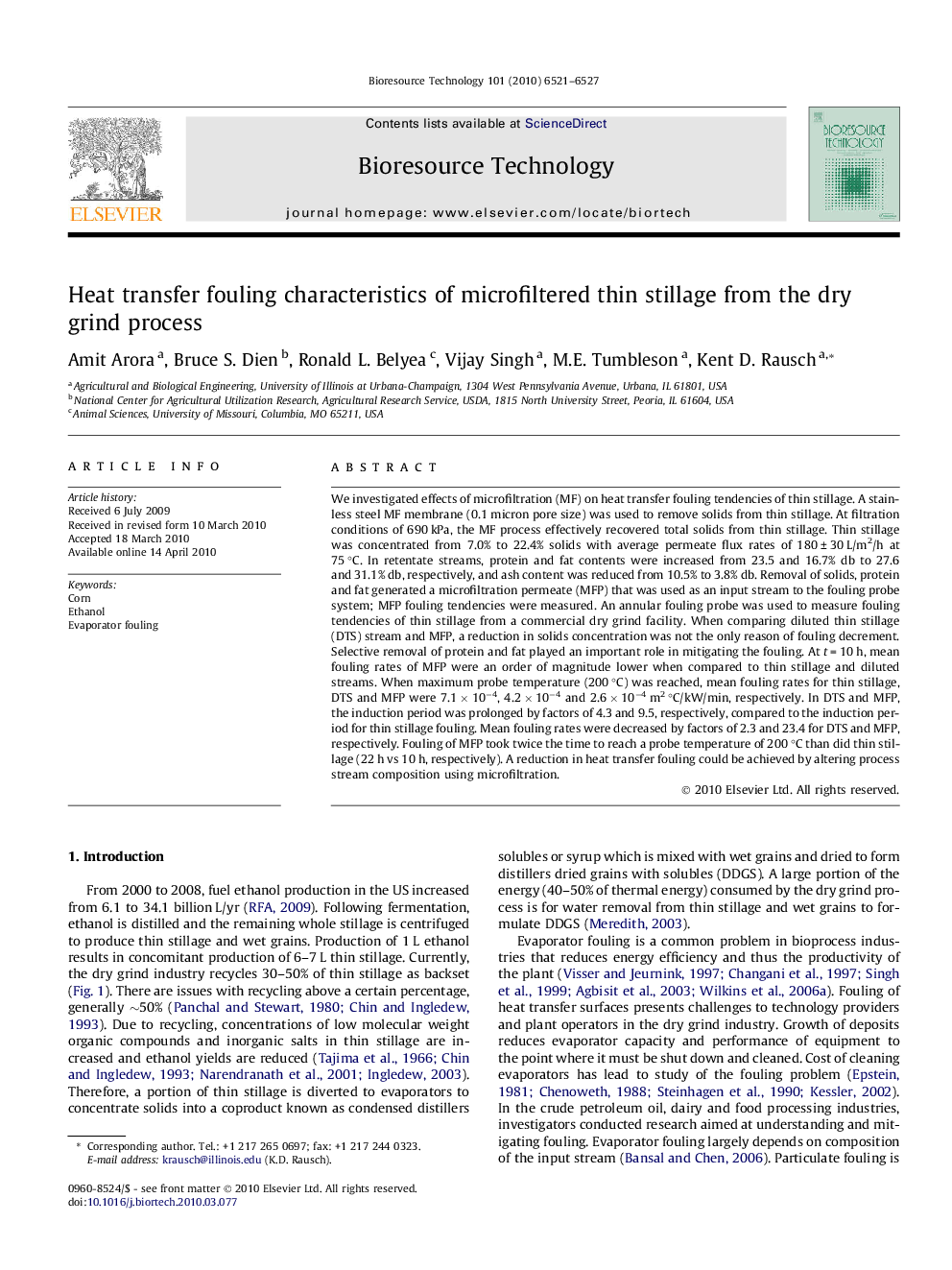| کد مقاله | کد نشریه | سال انتشار | مقاله انگلیسی | نسخه تمام متن |
|---|---|---|---|---|
| 683228 | 888997 | 2010 | 7 صفحه PDF | دانلود رایگان |

We investigated effects of microfiltration (MF) on heat transfer fouling tendencies of thin stillage. A stainless steel MF membrane (0.1 micron pore size) was used to remove solids from thin stillage. At filtration conditions of 690 kPa, the MF process effectively recovered total solids from thin stillage. Thin stillage was concentrated from 7.0% to 22.4% solids with average permeate flux rates of 180 ± 30 L/m2/h at 75 °C. In retentate streams, protein and fat contents were increased from 23.5 and 16.7% db to 27.6 and 31.1% db, respectively, and ash content was reduced from 10.5% to 3.8% db. Removal of solids, protein and fat generated a microfiltration permeate (MFP) that was used as an input stream to the fouling probe system; MFP fouling tendencies were measured. An annular fouling probe was used to measure fouling tendencies of thin stillage from a commercial dry grind facility. When comparing diluted thin stillage (DTS) stream and MFP, a reduction in solids concentration was not the only reason of fouling decrement. Selective removal of protein and fat played an important role in mitigating the fouling. At t = 10 h, mean fouling rates of MFP were an order of magnitude lower when compared to thin stillage and diluted streams. When maximum probe temperature (200 °C) was reached, mean fouling rates for thin stillage, DTS and MFP were 7.1 × 10−4, 4.2 × 10−4 and 2.6 × 10−4 m2 °C/kW/min, respectively. In DTS and MFP, the induction period was prolonged by factors of 4.3 and 9.5, respectively, compared to the induction period for thin stillage fouling. Mean fouling rates were decreased by factors of 2.3 and 23.4 for DTS and MFP, respectively. Fouling of MFP took twice the time to reach a probe temperature of 200 °C than did thin stillage (22 h vs 10 h, respectively). A reduction in heat transfer fouling could be achieved by altering process stream composition using microfiltration.
Journal: Bioresource Technology - Volume 101, Issue 16, August 2010, Pages 6521–6527